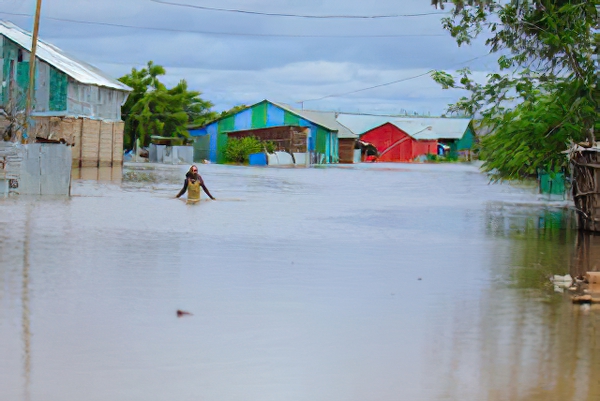Two of our East African project areas are currently affected by devastating floods. Extreme rainfall since mid-October cannot be absorbed by the soil and has caused all the rivers to burst their banks.
In our project areas in Ethiopia and Somalia, it is the great Shabelle River that has washed the masses of water far into the hinterland. The floods have simply carried away entire villages. Bridges have been destroyed, roads washed over and houses flooded.
Severe emergency
Following a detailed needs analysis on the ground, we are currently launching our joint emergency aid measures with our local partner organizations. This will enable us to reach people whose homes have been flooded.
Most of those affected have been able to save nothing but what they had on them. They are seeking shelter in host communities and higher ground near their homes, where they want to return. Others remain in flooded communities and can no longer provide for themselves. They are all now dependent on humanitarian aid.
Our help for 16,300 people affected
arche noVa has reallocated 220,000 euros from the project budgets. We use this to finance
- emergency aid for 4,400 people in Ethiopia
- emergency aid for 11,900 people in Somalia
Aid supplies such as soap, buckets, hygiene products and mosquito nets are being distributed and latrines for emergency supplies are being built.
In addition, we are directly supporting affected families who are currently unable to earn an income with cash aid. This type of emergency aid is considered to be particularly effective and timely. Cash enables those affected to act independently and buy what they need most urgently.
Risk of infectious diseases spreading
The tragedy of the floods in a region otherwise characterized by drought is that the excess water also means a shortage of drinkable water, as the floods overflow and contaminate water sources. The United Nations is currently warning of an outbreak of infectious diseases, particularly cholera. Our emergency aid therefore also includes the distribution of water treatment chemicals, known as aquatabs.
Effective help through localization
This disaster shows once again how extremely important our cooperation with local partner organizations is. In Somalia, our local team is cooperating with ASEP (Action for Social and Economic Progress) and PAH (Polish Humanitarian Action). In Ethiopia, our partner OWDA (Organization for Welfare and Development in Action) is deployed. The local helpers know exactly what is needed where and how to get it there. This is anything but trivial. The situation in the affected areas is confusing. Almost all bridges have been destroyed, roads are flooded and communication routes are impaired.
Background of the catastrophe: El Niño
The heavy rainfall and flooding in the Horn of Africa are linked to the El Niño weather phenomenon. It is caused by the warming of the Pacific Ocean and occurs every two to seven years. The effects are felt around the globe, especially near the equator. In some regions, El Niño causes heat and droughts in others extremely heavy rainfall. El Niño usually lasts nine to twelve months. There is currently no end in sight to the rainfall in East Africa. Experts believe it is likely that El Niño could continue until the regular rainy season in March to May 2024.
Dimension of the disaster: 3.1 million people affected in East Africa
The ongoing heavy rains in the Horn of Africa have claimed at least 170 lives so far, according to government agencies and the United Nations. UN OCHA (the United Nations Refugee Agency) currently puts the number of people affected by the heavy rains and flooding at more than 3.1 million in East Africa. The floods are particularly severe in Somalia, Ethiopia and Kenya;
Side effect of the disaster: crocodile danger
Our local partner organizations report that the local people have never experienced flooding on this scale before. Suddenly, villages are located on the banks of vast expanses of water that are otherwise surrounded by barren land. Now people who otherwise live far away from the river have to deal with the risk of crocodile accidents. This is just one aspect of the disaster scenario on the ground.














